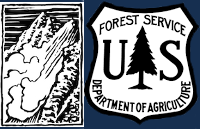24-25
Snowmobile triggered slide in Airplane Bowl
Also, on our way out we saw an avalanche in Airplane Bowl that had been triggered during the day today. This slide also broke on the persistent weak layers, 2-3' deep, 150' wide.
Snowmobile triggered 3-5' deep hard slab at Lionhead
A rider triggered a huge avalanche in the uppermost reaches of Targhee creek. We discovered it on our way out. The best we could tell looking at their tracks was that they had no idea they triggered it, even though part of their tracks were swept away.
Airplane bowl this afternoon after a rider triggered slide. There is a down track in the middle of the crown face
Forecast link: GNFAC Avalanche Forecast for Sun Mar 2, 2025GNFAC Avalanche Forecast for Mon Mar 3, 2025
Airplane bowl this morning, no avalanche
A rider triggered a huge avalanche in the uppermost reaches of Targhee creek on a north facing slope at 9200'
A rider triggered a huge avalanche in the uppermost reaches of Targhee creek on a north facing slope at 9200'
A rider triggered a huge avalanche in the uppermost reaches of Targhee creek on a north facing slope at 9200'
